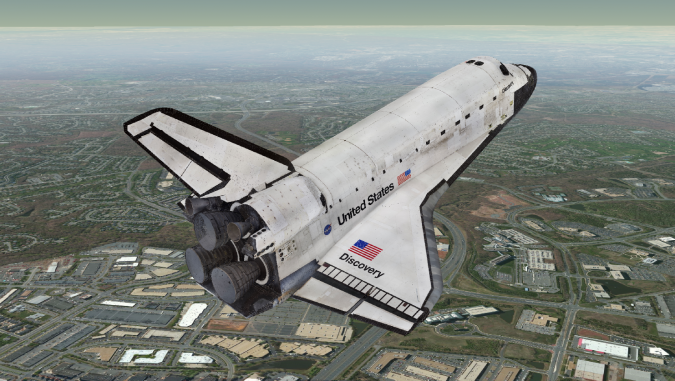Streamlining a High-resolution 3D Model of the Space Shuttle 'Discovery'
这篇文章是originally published in测绘学的世界.
Cesium, a market leader in streaming 3D geospatial technology, has announced it will collaborate with the acclaimed Smithsonian Institution, the world's largest museum, education and research complex, on its Open Access Initiative. To celebrate the initiative, Cesium will support the Smithsonian’s ability to stream 3D models of massive objects in its collection, such as the Space Shuttle 'Discovery', over the web in high resolution for the first time.
Through the Open Access Initiative, the Smithsonian will release about 2.8 million 2D and 3D images, public collections metadata and institutional research datasets as CC0 for any purpose: educational and research and commercial endeavours, creative reuse, computational analysis and innovative explorations.
Sharing massive high-resolution 3D models
“The Smithsonian Open Access Initiative aligns perfectly with Cesium’s vision to make the world’s collection of data more useful and accessible,” saidCesiumCEO Patrick Cozzi. “We are proud that our technology will give researchers, educators, and the public the ability to study 3D models in the Smithsonian’s collection in the highest resolution detail from anywhere in the world.”
使大规模high-resolution 3D models shareable begins at the intersection of Cesium’s core competencies of computer graphics, 3D data, and open standards. With Cesium, glTF models are converted to 3D Tiles, an open specification developed by the company and adopted by theOpen Geospatial Consortium(“OGC”) to make sharing massive amounts of 3D data as simple as sending a link. Cesium develops, supports, and promotes open standards with organizations like the OGC and The Khronos Group to advance technology, encourage collaboration, and fuel cross-disciplinary innovation.
The Space ShuttleDiscovery, on display at the James S. McDonnell Space Hangar at the National Air and Space Museum's Steven F. Udvar-Hazy Center in Chantilly, Va., is one of the largest objects in the Smithsonian’s collection. It is more than 122 feet long and weighs more than 4.5 million pounds. Now, through the Smithsonian Open Access Initiative and the collaboration with Cesium, a shareable, high-resolution 3D rendering will enable anyone to rotate, zoom in and study its details from anywhere in the world.
探索的3 d模型www.cesium.com/smithsonian.

Make your inbox more interesting.Add some geo.
Keep abreast of news, developments and technological advancement in the geomatics industry.
Sign up for free












